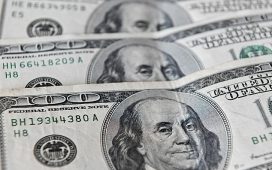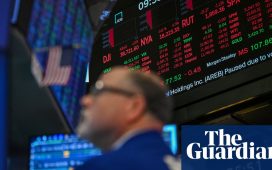Receive free High yield bonds updates
We’ll send you a myFT Daily Digest email rounding up the latest High yield bonds news every morning.
Before a company goes into distress, it usually faces credit stress.
That’s the stage where a company can afford its debt today, but would be forced to pay coupons of at least 10 per cent if it refinanced at current US interest rates and spreads, going by Bank of America’s definition.
A bond or loan is in real “distress” when its yield trades at least 10 percentage points above its risk-free benchmark. But with the Fed funds rate above 5 per cent, strategists at the bank decided to look at a wider range of debt for potential problems. They broadened their scope to include debt that’s in “pre-distress” (or, you know, stress).
In fact, about $550bn of the ~$1tn of new corporate debt from the past five years is either in stress or distress, the strategists wrote in a Friday note:
Roughly half of this money is in currently well-performing capital structures, while the other half is now in various stages of stress. We track $400bn in bonds and loans trading north of 600 bps, a category we define as “pre-distress”, where new coupon could be 10% or higher if it were reset at current levels. In addition, there are $150bn in deeply distressed assets (bonds<60 pts, loans<75 pts), where refinancing is no longer an option at current levels, unless there is a restructuring or improvement in prices.
And this is with the high-yield bond market’s yield trading at relatively narrow spreads over Treasuries, historically speaking:
While fixed-rate bond issuers have time before their borrowing costs rise — those companies don’t have to refinance until the bonds mature — loans and private credit usually carry floating interest rates, which reset to current benchmark rates more than once a year. The bank includes syndicated loans, private debt and high-yield bonds in its survey as well.
One common response is that floating-rate issuers can hedge their exposure to rising rates with swaps by locking in a fixed rate. Yet BofA’s strategists estimated that “only 24 [per cent] of floating debt was hedged by swaps going into this episode of higher rates.”
They didn’t specify the timing for that, however, which does matter. To oversimplify the issue a bit, if a company sold a floating-rate loan with interest rate hedges in August of last year, they could (theoretically, depending on the terms of the swap) be OK since rates are still far above their 2.5-per-cent levels from last year.
But so far this year, at least, that type of hedging could be downright unhelpful, comparable to locking in short-term rates at their highest levels since 2007.
The strategists modelled increases in interest costs in a few different scenarios based on CPI (which we must presume means different Fed policy-rate regimes and/or long-end yields). They find that credit markets may already be pricing in the projected stress in healthcare, telecoms and technology sectors from higher rates.
In the services sector, on the other hand, investors may be too optimistic:
The ranking shows health and tech among top-five most stressed segments, with retail and finance not far behind. At the same time, services are way down the list, which is surprising, and opens door to potential repricing wider.
On other opposite side, cable, telecoms, media, and chemicals are among the most stressed sectors, even though they are not among the most vulnerable to the capital deprivation argument we are developing here. We view the latter three situations as more interesting as a result.
Risk of “capital deprivation” may be a better turn of phrase than “pre-distress”, or even just “stress”. Either way, pricier money is going to hurt junk-rated companies.










